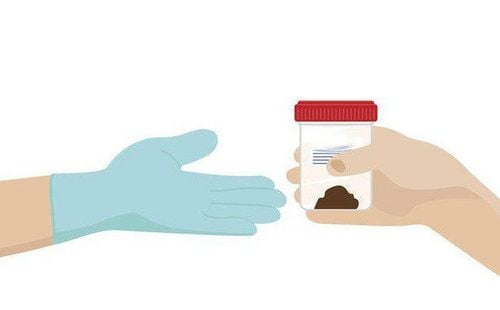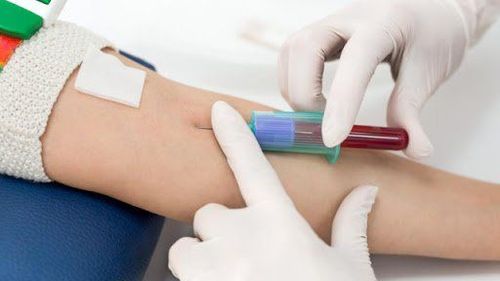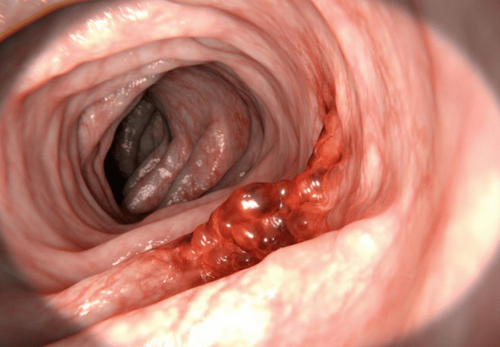This is an automatically translated article.
The D-dimer test is a biochemical test used to check for blood clots. D-dimer is a small protein found in the blood. It is joined by a cross-link between the two D segments of fibrin, or the product of blood clot breakdown.
1. What is the D-dimer test?
When injured, the body's auto-clotting mechanism is activated to help prevent blood loss. When the wound is stable, the wound is hemostatic and the mechanism to break the blood clot is automatically performed so that red blood cells can circulate normally.
Increased levels of D-dimer in the blood are a sign of a blood clot in the blood vessel. Therefore, quantification of D-dimer in the blood is a method to identify whether there is a blood clot or not. This technique is called the D-dimer test.
2. When to do the D-dimer . test
The D-dimer test is indicated for two basic purposes:One is to support an accurate diagnosis of the patient's health condition; The second is to rule out one or more problems that can cause unusual symptoms in the patient.

Xét nghiệm D-dimer để chẩn đoán tình trạng sức khỏe và nguy cơ gây bệnh của bệnh nhân
The doctor will order a D-dimer test when the patient has symptoms such as: Swollen feet, discolored legs or weakness in one leg. In addition, symptoms of pulmonary embolism such as: Sudden shortness of breath, heart palpitations, chest pain, coughing up blood, etc. will also be indicated for a D-dimer test.
3. Significance of the D-dimer . test
Depending on the quantitative method, the results of the D-dimer test in different medical facilities will give different results. Currently, there are two commonly used D-dimer testing techniques:
Latex agglutination D-dimer ( Latex agglutination D-dimer) test. The D-dimer concentration considered normal for this method is < 500 μg/L or < 0.5 mg/L. Ultrasensitive immunoturbidimetric test (D-dimer test). The value considered normal for this technique is a D-dimer concentration <1.1 mg/L. A negative D-dimer test result: This means that it's valid, it's likely that you don't have a blood clot in your blood. In the event that the symptoms mentioned above persist, it is possible that other tests other than the D-dimer test will be ordered to make the most accurate claim.
Positive D-dimer test result: This means that the amount of D-dimer in the blood has exceeded the allowable level, you may have blood clots in the capillaries. In addition, factors such as: Infection, liver disease, cancer, pregnancy are also causes of high blood levels of D-dimer.
This result only indicates that you are at high risk for blood clots, but cannot be definitive. The D-dimer test is also not able to indicate the location of the blood clot, so to get the most accurate results, doctors will prescribe other laboratory testing techniques.

Kết quả xét nghiệm chỉ xác định được nguy cơ cao xuất hiện huyết khối chứ không hoàn toàn chính xác
4. Is the D-dimer test dangerous?
The answer is no. The D-dimer test is similar to other blood tests, in that the sample is obtained by drawing blood with a metal needle. Therefore, symptoms such as bleeding at the injection site, dizziness, or mild pain are completely normal.
Some very rare cases of risk may arise such as infection, bleeding or fainting.
5. What should be kept in mind when performing a D-dimer test?
For the most accurate D-dimer test results you should note a few things:
Do not eat or drink for 8 to 12 hours before the test. Stop using drugs, supplements or blood to avoid affecting the test results Above are the knowledge D-dimer as well as the meaning of the D-dimer test, hope this knowledge will help for you. If you are assigned a D-dimer test, don't worry too much, just calmly wait for the results. Your doctor will explain and give you the right advice and direction no matter what the outcome.
Any questions that need to be answered by a specialist doctor as well as customers wishing to perform tests at Vinmec International General Hospital, please book an appointment on the website to be served.
Please dial HOTLINE for more information or register for an appointment HERE. Download MyVinmec app to make appointments faster and to manage your bookings easily.













